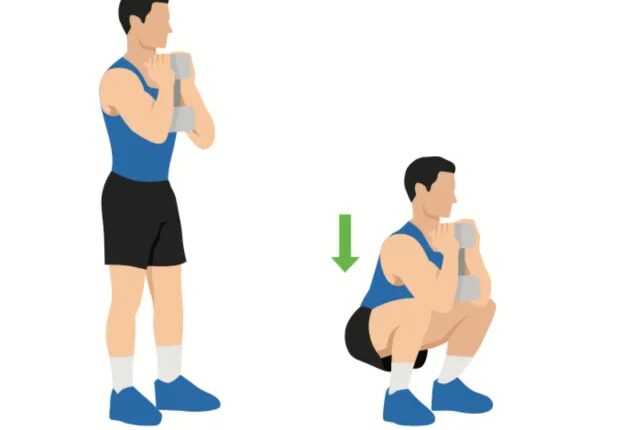Many people believe that getting stronger requires spending endless hours at the gym, investing in expensive equipment, and paying steep fees for memberships. However, the truth is that you can achieve total-body strength by using just free weights at home. If you’re not sure how to begin, we consulted with Chris Mohr, PhD, RD, an exercise physiologist and fitness and nutrition advisor for Fortune Recommends. Chris shares eight uncomplicated yet powerful exercises using free weights to enhance your strength-training regimen.
Simple free-weight exercises can boost overall strength, improve functional fitness, and support weight management. According to a 2019 review, incorporating free weights into your workout routine allows you to engage multiple muscle groups while improving coordination and balance—two essential components of healthy aging. Additionally, the Centers for Disease Control and Prevention states that strength training helps build lean muscle mass and boost metabolism by as much as 15%.
So, without further ado, read on to uncover eight simple free-weight exercises to build total-body strength.
What You Need: Grab a set of dumbbells and a sturdy bench. These exercises are designed to be performed with added weight for increased resistance, which supports muscle growth and strength. Depending on your rest intervals, the workout can be completed in 45 to 60 minutes.
Goblet Squats
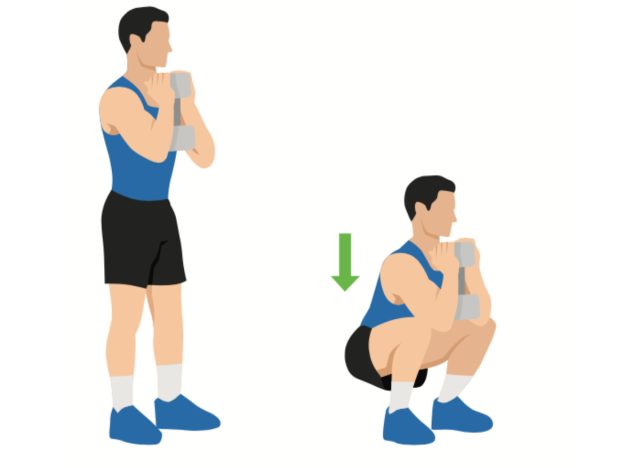
- Hold a dumbbell or kettlebell with both hands at chest level.
- Stand with your feet hip-width apart.
- Bend your knees and push your hips back as if sitting in a chair.
- Lower your body until your thighs are parallel to the floor, keeping your chest lifted.
- Press through your heels to stand back up to the starting position.
- Aim for 3 sets of 8 to 12 squats, adjusting the weight as needed.
- Rest for 1 minute between sets.
Tip: Focus on maintaining good form. Your knees shouldn’t extend beyond your toes.
Deadlifts
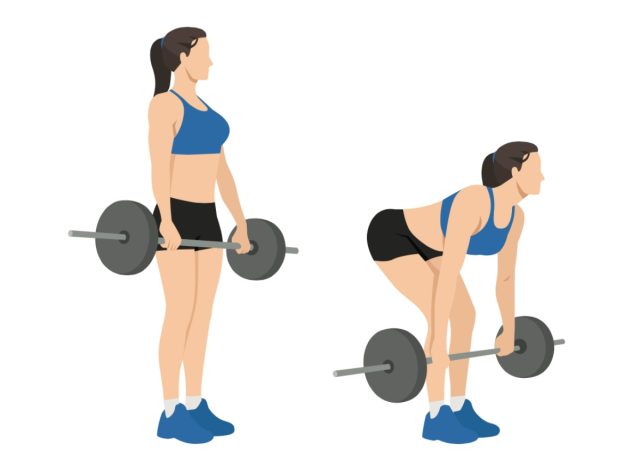
- Grab a barbell or a pair of dumbbells.
- Stand with your feet about shoulder-width apart.
- Lean forward slightly, bending at your hips and knees, keeping the weights close to your shins.
- Imagine you’re shaving your legs with the weights as you lift.
- Drive your hips forward to return to the starting position.
- Perform 6 to 8 reps for 3 sets, increasing the sets or weights as you progress.
- Rest for 1 minute between sets.
Tip: Keep your back straight to prevent injury and maintain a neutral spine throughout the movement.
Lunges
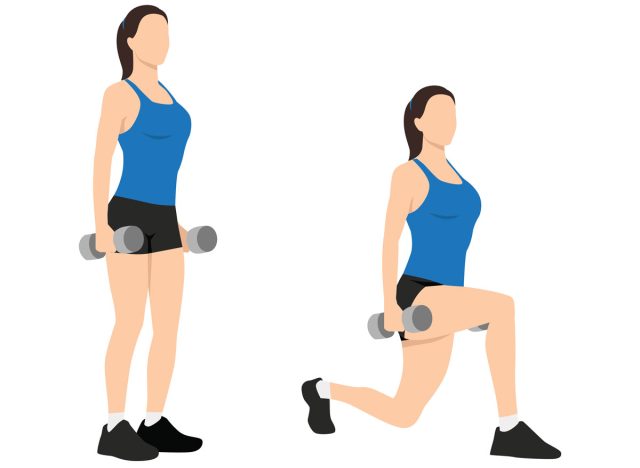
- Stand with your feet together, holding a dumbbell in each hand.
- Step forward with one leg, lowering your body until the back knee is just above the ground.
- Keep your front knee over your ankle as you lower.
- Push back to the starting position and switch legs.
- Complete 3 sets of 10 to 12 reps per side.
- Rest for 1 minute between sets.
Tip: Focus on maintaining balance and control throughout the movement while engaging your core for stability.
Bench Press
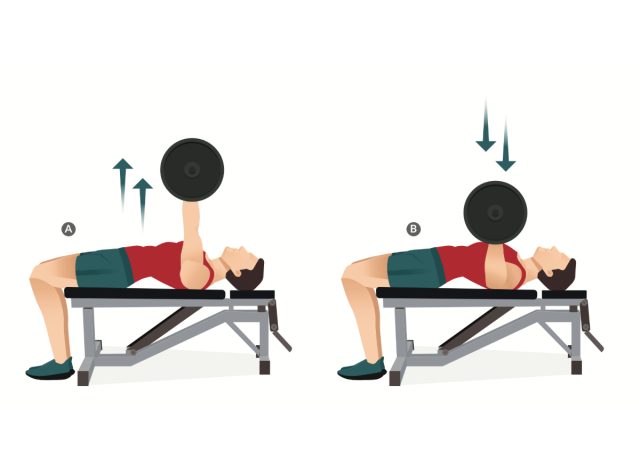
- Lie on a bench and position a barbell above your chest, gripping the bar slightly wider than shoulder-width.
- Lower the bar slowly to the center of your chest, keeping your elbows at a 45-degree angle.
- Press the bar back up to the starting position.
- Perform 8 to 10 reps for 3 sets.
- Rest for 1 minute between sets.
Tip: Ensure your feet are flat on the ground and your back is flat against the bench.
Bent-over Row
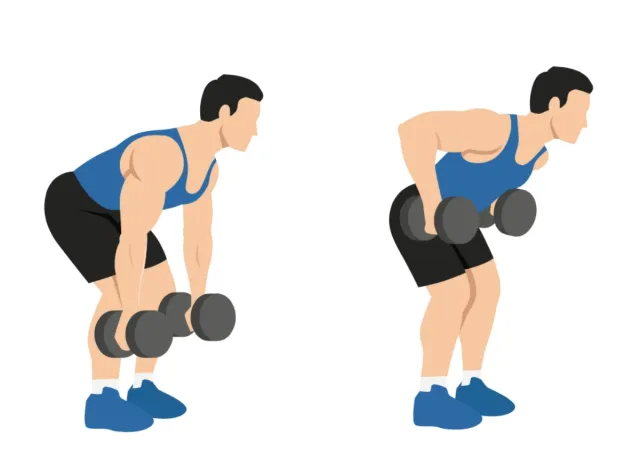
- Bend your knees slightly and lean forward from the waist while keeping your back flat.
- Hold a barbell or pair of dumbbells with your arms hanging straight down.
- Pull the weights toward your stomach, squeezing your shoulder blades together.
- Lower the weights back down with control.
- Aim for 8 to 12 reps for 3 sets with 1 minute of rest between.
Tip: Keep your elbows close to your body throughout the movement.
Shoulder Press
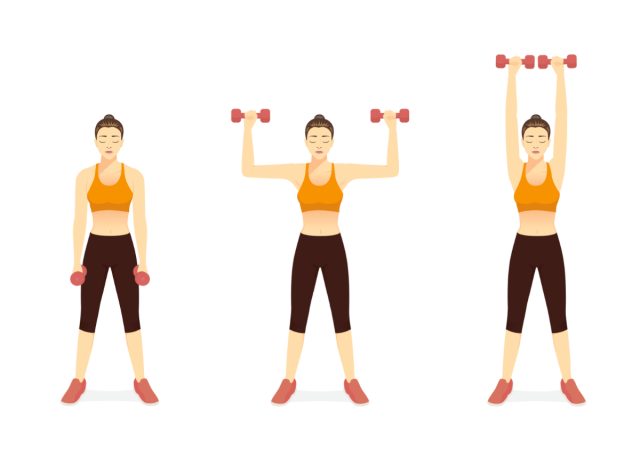
- Stand with a dumbbell in each hand at shoulder height and elbows bent out to the sides.
- Brace your core and press the dumbbells overhead until your arms are fully extended.
- Lower the weights back down to shoulder height.
- Perform 3 sets of 8 to 10 reps, adjusting the weight as necessary. Rest for 1 minute between sets.
Tip: Avoid arching your back and engage your core to maintain stability.
Bicep Curls
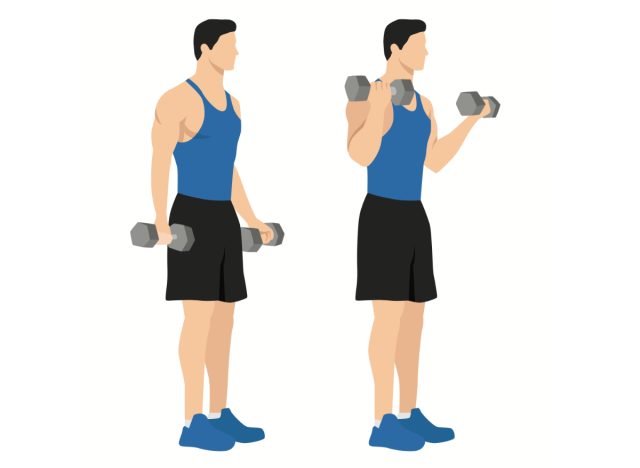
- Stand or sit holding dumbbells with your arms down at your sides and palms facing forward.
- Curl the weights up to your shoulders, keeping your elbows close to your body.
- Lower the weights back down to the starting position.
- Complete 3 sets of 10 to 12 reps per side.
- Rest for 1 minute between sets.
Tip: Avoid swinging the weights for better muscle contractions and control.
Overhead Tricep Extensions
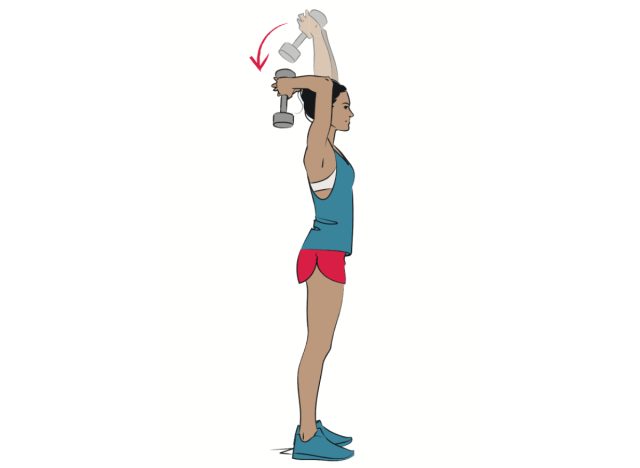
- Stand or sit while holding a dumbbell with both hands, lifting it above your head.
- Bend your elbows to lower the dumbbell behind your head.
- Straighten your arms to lift the dumbbell back to the starting position.
- Aim for 10 to 12 reps for 3 sets.
- Rest for 1 minute between sets.
Tip: Keep your elbows close to your ears to isolate the triceps.
FAQs
Why should I incorporate free-weight exercises into my workout routine?
Free-weight exercises are great for building functional strength, as they engage multiple muscle groups and help improve stability and balance. They also allow for a greater range of motion compared to machines, which can lead to better muscle development.
Do I need any special equipment for free-weight exercises?
For most free-weight exercises, you will need a set of dumbbells and possibly a barbell with weight plates. It’s also a good idea to have a workout bench for certain exercises. Make sure to choose weights that are appropriate for your fitness level to prevent injury.
How many sets and reps should I do for these free-weight exercises?
It’s generally recommended to do 3-4 sets of 8-12 reps for each exercise to build muscle strength and endurance. Start with a weight that allows you to complete the desired number of reps with proper form. As you get stronger, you can gradually increase the weight.
Is it necessary to warm up before doing free-weight exercises?
Yes, it’s important to warm up your muscles before starting any workout to prevent injury and improve performance. A good warm-up can include light cardio, dynamic stretches, and exercises specific to the muscle groups you’ll be targeting with your free-weight exercises.

